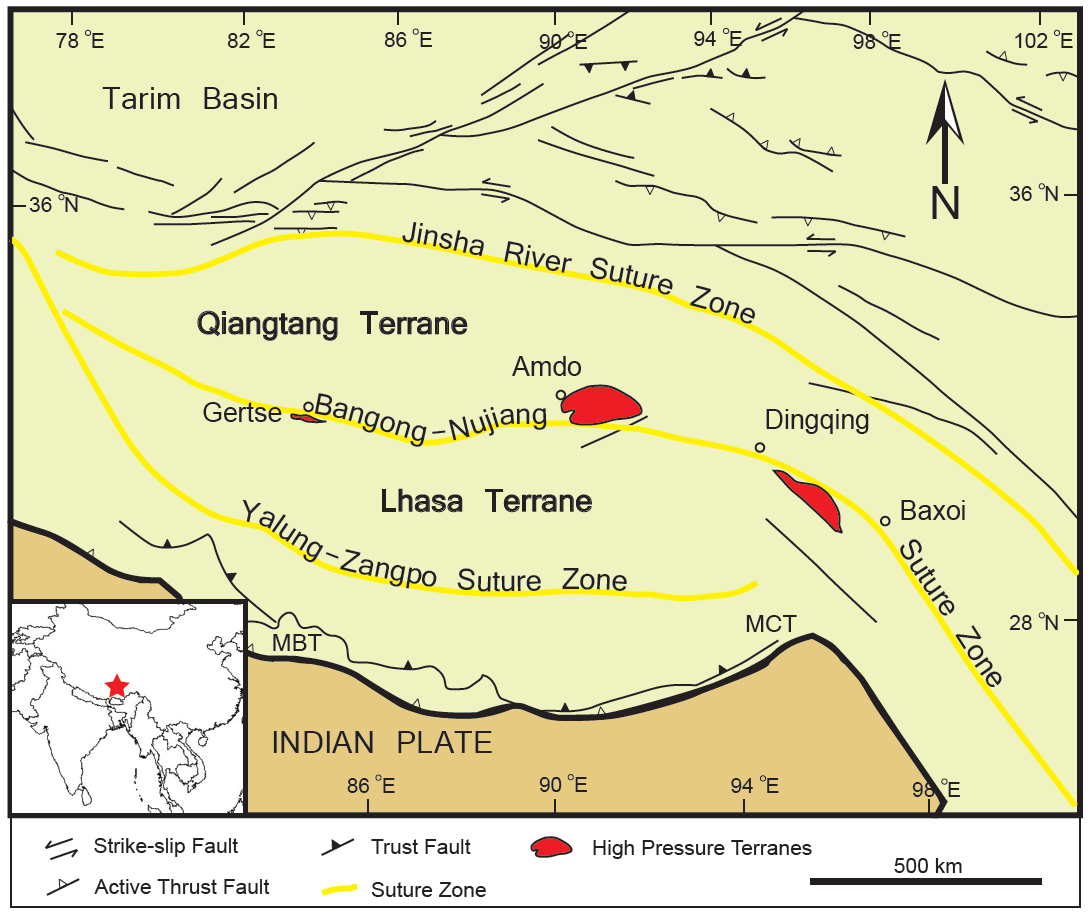Qiangtang Terrane on:
[Wikipedia]
[Google]
[Amazon]
 The Qiantang terrane is one of three main west-east-trending
The Qiantang terrane is one of three main west-east-trending
 The Qiantang terrane is one of three main west-east-trending
The Qiantang terrane is one of three main west-east-trending terrane
In geology, a terrane (; in full, a tectonostratigraphic terrane) is a crust fragment formed on a tectonic plate (or broken off from it) and accreted or " sutured" to crust lying on another plate. The crustal block or fragment preserves its d ...
s of the Tibetan Plateau
The Tibetan Plateau, also known as the Qinghai–Tibet Plateau or Qingzang Plateau, is a vast elevated plateau located at the intersection of Central Asia, Central, South Asia, South, and East Asia. Geographically, it is located to the north of H ...
.
During the Triassic, a southward-directed subduction along its northern margin resulted in the Jin-Shajing suture, the limit between it and the Songpan-Ganzi terrane. During the Late Jurassic
The Late Jurassic is the third Epoch (geology), epoch of the Jurassic Period, and it spans the geologic time scale, geologic time from 161.5 ± 1.0 to 143.1 ± 0.8 million years ago (Ma), which is preserved in Upper Jurassic stratum, strata.Owen ...
and Early Cretaceous
The Early Cretaceous (geochronology, geochronological name) or the Lower Cretaceous (chronostratigraphy, chronostratigraphic name) is the earlier or lower of the two major divisions of the Cretaceous. It is usually considered to stretch from 143.1 ...
, the Lhasa terrane
The Lhasa terrane is a terrane, or fragment of crustal material, sutured to the Eurasian plate during the Cretaceous that forms present-day southern Tibet. It takes its name from the city of Lhasa in the Tibet Autonomous Region, China. The north ...
merged with its southern margin along the Bangong suture. This suture, the closure of part of the Tethys Ocean
The Tethys Ocean ( ; ), also called the Tethys Sea or the Neo-Tethys, was a prehistoric ocean during much of the Mesozoic Era and early-mid Cenozoic Era. It was the predecessor to the modern Indian Ocean, the Mediterranean Sea, and the Eurasia ...
, transformed the Qiantang terrane into a large-scale anticline
In structural geology, an anticline is a type of Fold (geology), fold that is an arch-like shape and has its oldest Bed (geology), beds at its core, whereas a syncline is the inverse of an anticline. A typical anticline is convex curve, c ...
. The merging of the Lhasa and Qiangtang terranes resulted in the uplift of a palaeoplateau known as the Qiangtang Plateau, which rapidly thinned later in the Cretaceous
The Cretaceous ( ) is a geological period that lasted from about 143.1 to 66 mya (unit), million years ago (Mya). It is the third and final period of the Mesozoic Era (geology), Era, as well as the longest. At around 77.1 million years, it is the ...
.
The Qiantang terrane is now located at above sea level, but the timing of this uplift remains debated, with estimates ranging from the Pliocene-Pleistocene (3–5 ) to the Eocene (35 Mya) when the plateau was first denudated.
See also
Qiangtang terrane related (from south to north) * Geology of the Himalaya * Indus Suture Zone *Transhimalaya
The Trans himalaya (also spelled Trans-Himalaya), or "Gangdise – Nyenchen Tanglha range" ( zh, s=冈底斯-念青唐古拉山脉, p=Gāngdǐsī-Niànqīngtánggǔlā Shānmài), is a mountain range in China, India and Nepal, extending in a we ...
, includes following:
** Lhasa terrane
The Lhasa terrane is a terrane, or fragment of crustal material, sutured to the Eurasian plate during the Cretaceous that forms present-day southern Tibet. It takes its name from the city of Lhasa in the Tibet Autonomous Region, China. The north ...
** Karakoram fault system
The Karakoram fault is an oblique-slip fault system in the Himalayan region across India and Asia. The slip along the fault accommodates radial expansion of the Himalayan arc, northward indentation of the Pamir Mountains, and eastward lateral ext ...
* High pressure metamorphic terranes along the Bangong-Nujiang Suture Zone
* Qiangtang terrane
References
Notes
Sources
* * * Geology of Tibet Historical tectonic plates Terranes {{plate-tectonics-stub